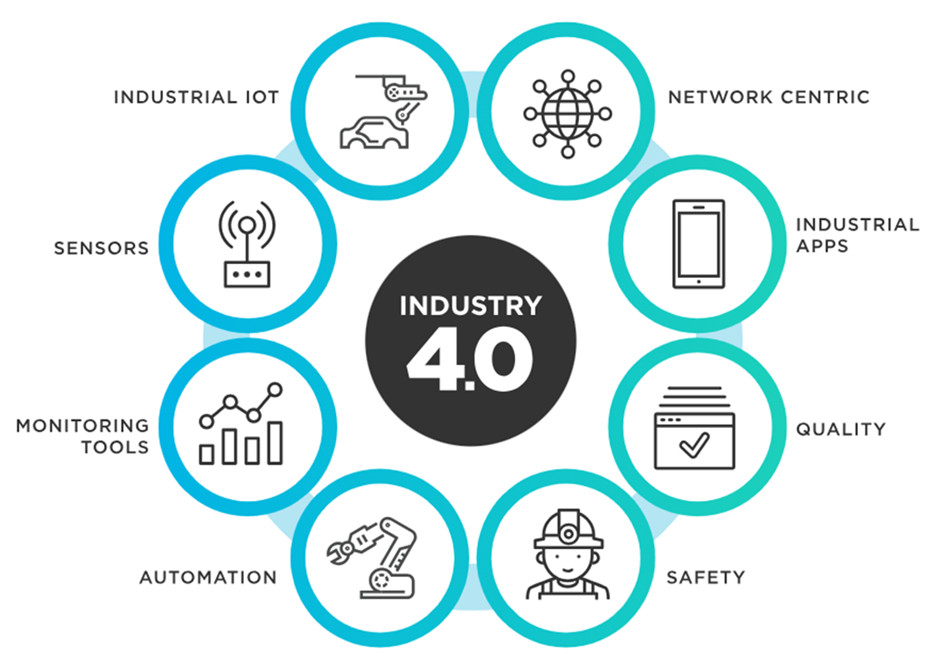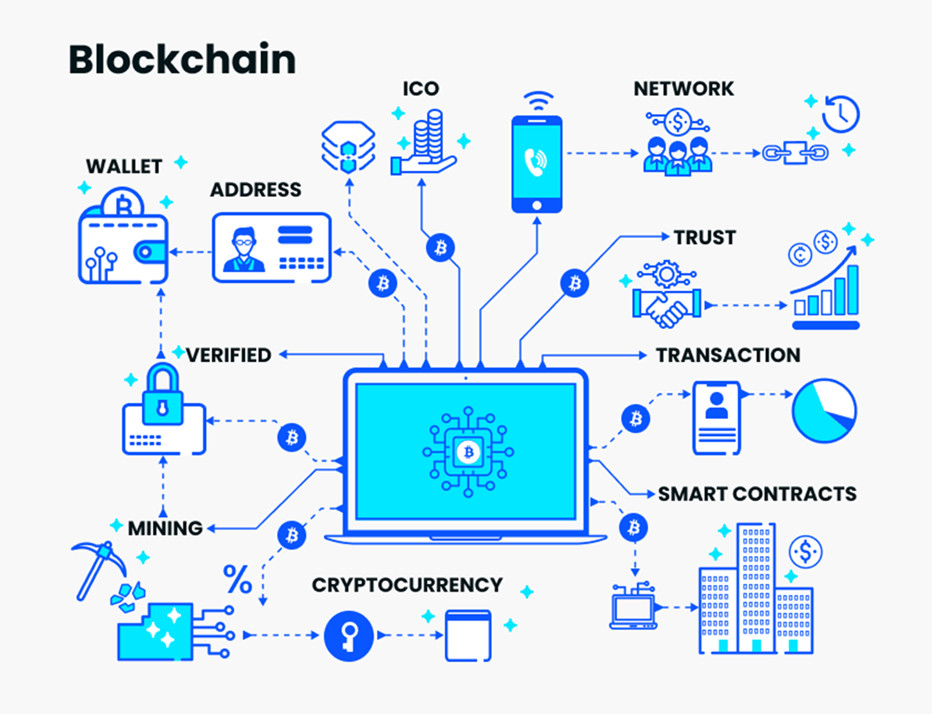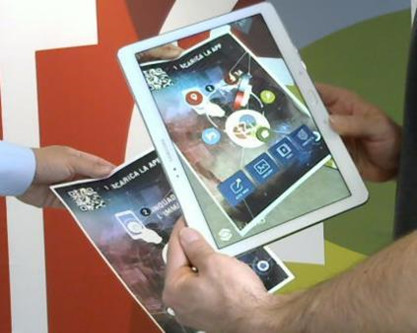Module goal
Explore the significant trends within digital innovation, focusing on key areas like artificial intelligence, cloud computing, and the Internet of Things, understanding their implications and influence on various sectors.
Explore the significant trends within digital innovation, focusing on key areas like artificial intelligence, cloud computing, and the Internet of Things, understanding their implications and influence on various sectors.
The landscape of digital trends is constantly evolving, reshaping industries and societal interactions in profound ways. These trends encompass a wide array of technological advancements and strategic approaches that redefine how businesses operate and engage with their audiences. Understanding and harnessing these trends are imperative for organizations aiming to thrive in today's digital era.
At the heart of these trends lies the strategic integration of digital technologies to drive efficiency, innovation, and customer-centricity. Organizations that effectively navigate these trends can unlock new opportunities, streamline processes, and create differentiated experiences for their stakeholders.
However, it's essential to recognize that embracing digital trends goes beyond adopting new tools and technologies. It requires a comprehensive understanding of how these trends intersect with organizational objectives and market dynamics. Successful navigation of digital trends necessitates strategic foresight, agility, and a commitment to continuous learning and adaptation.
Moreover, digital trends are not static; they evolve rapidly in response to technological advancements and shifting consumer behaviors. Organizations must, therefore, cultivate a culture of innovation and agility to stay ahead of the curve and capitalize on emerging opportunities. By staying attuned to these trends and embracing a proactive approach to innovation, businesses can position themselves for sustained success in a dynamic digital landscape.
Digital trends encompass a spectrum of innovations, including but not limited to artificial intelligence (AI), cloud computing, internet of things (IoT), blockchain technology, 3D printing and mixed reality (AR/VR). These trends are not isolated phenomena but rather interconnected forces that drive transformative change across various sectors.
Artificial intelligence (AI) stands as one of the most transformative and impactful technologies of the digital age, encompassing a wide range of capabilities spanning from machine learning and natural language processing to robotics and cognitive computing. The integration of AI enables organizations to automate routine tasks, derive actionable insights from vast datasets, and personalize customer experiences, thereby revolutionizing traditional processes and opening new frontiers of efficiency and innovation.

However, the adoption of AI is not without its challenges. Ethical considerations regarding data privacy, algorithmic bias, and the risk of unemployment require careful attention, and the complexity of AI technologies necessitates specialized expertise and robust governance frameworks to ensure responsible and ethical deployment. Nevertheless, the potential benefits of AI are substantial, with organizations leveraging its power to gain a competitive edge, drive operational efficiency, and deliver enhanced value propositions to their stakeholders.
Furthermore, despite calls for a halt in AI research from leaders in the technology sector, it is unlikely to materialize. The risks associated with AI, particularly concerning national security, are real and should be addressed seriously, with AI paving the way for new forms of cyber warfare, mass surveillance, and advanced propaganda. The transparency of AI networks is becoming increasingly relevant, with some companies embracing openness while others opt for closed models. Regulation will heavily influence the future of AI networks, with controversies also arising around AI's energy usage and copyright issues, adding further challenges.
Cloud computing has emerged as a cornerstone of modern digital infrastructure, providing unparalleled scalability, flexibility, and efficiency. Through the utilization of cloud services, organizations can access computing resources on-demand, without the need for significant upfront investment in hardware or infrastructure.
This approach not only facilitates seamless collaboration and enables remote work capabilities but also accelerates the pace of innovation through rapid prototyping and deployment. The adoption of cloud computing has become ubiquitous, fundamentally transforming how businesses manage IT infrastructure and software development.
Furthermore, cloud computing serves as an enabler for other emerging digital trends, such as AI and IoT, by supplying the computational power and storage necessary for processing large volumes of data and running sophisticated algorithms.
However, with the adoption of cloud computing also come concerns related to data security, regulatory compliance, and vendor lock-in. It is essential to adopt effective governance and risk management strategies to mitigate these challenges and maximize the benefits of cloud adoption.
This constantly evolving field offers numerous aspects that go beyond mere technology. The adoption of a multi-cloud strategy by large organizations is poised to grow, offering advantages in terms of cost and flexibility but also presenting challenges in data governance and integration with legacy systems.
The increasing focus on real-time data, cloud security and resilience, environmental sustainability, and process simplification through low-code/no-code tools are just some of the elements that define the ever-evolving landscape of cloud computing.
The Internet of Things (IoT) heralds the advent of a new era of interconnectedness, where everyday objects are equipped with sensors, actuators, and connectivity, enabling autonomous data collection and exchange. This network of interconnected devices spans a wide range of applications, from smart homes and wearable devices to industrial automation and smart cities.

The proliferation of IoT devices generates a considerable amount of data, providing organizations with valuable insights into operational efficiencies, consumer behaviors, and environmental conditions. Leveraging IoT data, businesses can optimize processes, improve decision-making, and create personalized experiences for customers.
However, the exponential growth of IoT devices also presents challenges related to data privacy, security vulnerabilities, and interoperability. Safeguarding IoT ecosystems against cyber threats and ensuring compatibility across heterogeneous devices require robust security protocols and interoperability standards.
Moreover, the successful implementation of IoT initiatives depends on collaboration among ecosystem stakeholders, including device manufacturers, service providers, and regulatory bodies. Interdisciplinary expertise ranging from hardware design to software development, data analytics, and cybersecurity is essential to unlock the full potential of IoT technologies.
The Internet of Things holds immense promise for transforming industries and enhancing quality of life, but realizing this potential requires concerted efforts to address technical, regulatory, and ethical considerations associated with IoT deployments. Looking to the near future, it is projected that over 207 billion devices will be connected to the global network that constitutes the Internet of Things (IoT).
An increasing number of these devices will not merely be computers or smartphones but objects of various kinds, from toothbrushes to heavy industrial machinery, endowed with artificial intelligence (AI) and capable of autonomous decision-making.
In recent years, businesses worldwide have begun to reap the benefits of IoT, and individuals are progressively adopting a wider range of wearable devices and connected products in their daily lives. This trend shows no sign of slowing down as the boundary between the physical and digital worlds continues to blur.
Security and privacy in IoT are a growing concern, especially with the anticipated threat of AI-powered cyber-attacks. It is imperative to ensure that devices remain secure, particularly in light of remote and distributed workforces.
In the healthcare sector, IoT devices are revolutionizing patient management, enabling remote monitoring, diagnostic assistance, and data collection for research and innovative treatment development. This trend is expected to grow with the introduction of generative AI for more efficient analysis and interpretation of patient data.
Regarding the circular economy, IoT will play a fundamental role in monitoring energy efficiency in buildings, optimizing supply chains, and implementing waste management and recycling practices. IoT technology will also contribute to optimizing urban traffic, reducing pollution, and improving air quality in cities.
Blockchain technology has emerged as a revolutionary force in the digital landscape, offering decentralized and immutable ledgers for transaction recording. By employing cryptographic techniques, blockchain enables secure and transparent data storage and transmission across distributed networks. One of its primary applications is in financial transactions, where cryptocurrencies like Bitcoin and Ethereum have gained widespread adoption. Beyond finance, blockchain is utilized in supply chain management, identity verification, smart contracts, and decentralized applications (DApps), transforming traditional business processes and fostering trust in digital transactions.

However, challenges such as scalability, interoperability, and regulatory uncertainty persist in the blockchain ecosystem. Scalability solutions like sharding and layer 2 protocols aim to address these issues and unlock the full potential of blockchain technology across various industries. Consequently, blockchain technology represents a paradigm shift in how data is stored, verified, and transacted in the digital era, offering unprecedented levels of security, transparency, and decentralization.
Amidst the era of AI, many unresolved issues regarding data privacy and control persist. There is a growing recognition that online activities generate and share personal data. However, the centralization of companies and government institutions raises doubts about the control and security of such data, despite privacy policies and regulatory compliance like GDPR. Some believe that Web3, with its decentralized databases and blockchain, could offer significant solutions to these issues, promising greater privacy and security for users.
Despite the focus on generative AI in 2023, work on the next generation of Web3 apps and technologies continues, with prospects of mainstream adoption in the near future. Sustainability in blockchain and Web3 is a major concern, particularly regarding high energy consumption. Web3 also promises decentralized tools for more private and censorship-free communications and networking, although widespread adoption may take longer than expected. Finally, discussions revolve around the role of cryptocurrencies, decentralized finance (DeFi), and central bank digital currencies (CBDCs) within the context of Web3, with particular attention to concerns regarding fraud and criminal activities.
3D printing, or additive manufacturing, has revolutionized the process of designing and producing physical objects, enabling the creation layer by layer of three-dimensional objects based on digital models and utilizing a wide range of materials, from metals to bioplastics.
Its applications span across various industries, including manufacturing, healthcare, aerospace, and automotive, offering benefits such as rapid prototyping, product customization, and cost efficiency. However, challenges like limited material availability, slow production processes, and quality control issues persist, driving current research and development efforts to foster greater adoption and innovation.
Simultaneously, the 3D printing industry is undergoing a period of consolidation, with many companies seeking to strengthen their market position to address growing competition. This process is driven by the need to improve corporate performance and meet investor expectations, while also witnessing a convergence with emerging technologies like AI, which promise to introduce new applications and innovative use cases.
The consolidation of leading companies in the sector is viewed positively by customers, simplifying choices and accelerating the adoption of innovative solutions. For instance, a small design company utilizes 3D printing to create prototypes of their products, saving time and money in the product development process, while an aerospace company produces lightweight and complex components for their aircraft engines, enhancing efficiency and reducing overall aircraft weight.
Furthermore, it is anticipated that innovation in the field of 3D printing, particularly in the realm of nanoscale printing and advanced materials, will open up new markets and growth opportunities, supported by the increasing integration of AI to enhance efficiency and result quality.
Mixed Reality (MR) represents a significant evolution in the contemporary technological landscape, integrating physical and digital worlds through advanced technologies such as Virtual Reality (VR) and Augmented Reality (AR). While VR transports users into entirely digital environments, AR overlays digital content onto the real world, offering a new dimension of interaction and reality perception.
The applications of mixed reality are incredibly diverse and impact numerous industrial sectors, from entertainment to education, healthcare to corporate training. This technology provides engaging and interactive experiences that go beyond simple content visualization, enabling users to actively participate and collaborate in innovative ways.


However, despite the evident benefits, there are still significant challenges to address in mixed reality. Hardware limitations, content development complexities, and user adoption barriers represent obstacles to fully realizing the potential of this technology. Continuous advancements in hardware technology, content creation, and user interface design are essential to overcome these challenges and ensure an optimal experience for users.
Furthermore, immersive internet represents the future of online experience, evolving beyond simple web pages to offer engaging and collaborative experiences. This transformation is driven by technological developments such as generative Artificial Intelligence, enabling the creation of increasingly realistic and engaging digital environments.
The integration of more powerful and versatile devices will make access to immersive internet more convenient and widespread, opening up new application possibilities in sectors such as education, entertainment, commerce, and collaborative work. However, with these technological advancements also come significant challenges, such as online security and privacy protection, which will require innovative solutions and special attention to ensure a safe and positive online experience for all users.
Verdadeiro
Verdadeiro
Verdadeiro
Falso
Verdadeiro
Verdadeiro
Falso
Falso
Verdadeiro
Falso
Licenciado baixo a Licenza Creative Commons Atribución Compartir igual 4.0